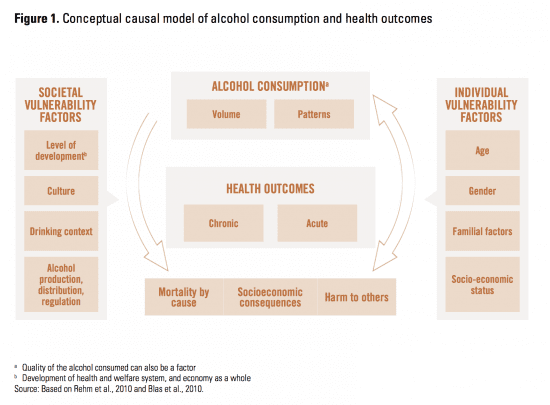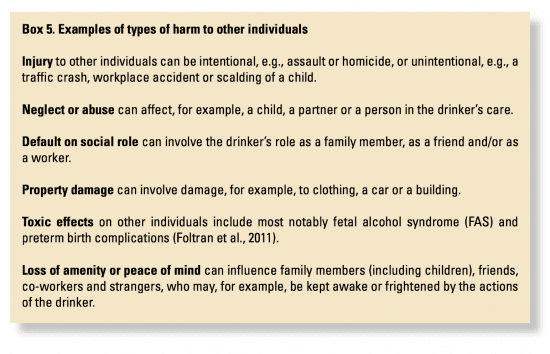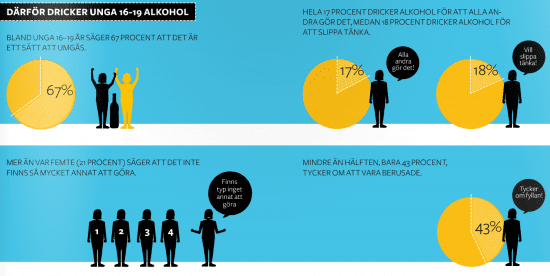While reading the headline of this blog, another human being passed away.
I feel that this is so sad and tragic, for the person, the family, friends, colleagues, the community and society overall. And what adds to my grieve are two facts:
- Most likely the death could have been prevented.
- Most likely it’s an “innocent” person whose life was cut short.
Worldwide, every ten seconds, one human being dies because of alcohol. Alcohol kills more people in the world than AIDS, tuberculosis and violence combined. Every year we lose 3.3 million lives because of alcohol – because of alcohol-induced violence and abuse, because of a vast number of alcohol-related diseases and disorders (cancer, heart disease, HIV/ AIDS, tuberculosis, addiction etc.), because of road traffic accidents and injuries, because of workplace accidents and injuries. It all means that every 20th death is because of alcohol.
Those are the most recent statistics, yesterday published by the World Health Organization in the “Global status report on alcohol and health 2014“.
Alcohol is a toxic, carcinogenic, addictive and terratogenic substance, and yet we are all exposed to the alcohol industry that markets its products aggressively. Big Alcohol operations stand in great contrast to the latest WHO findings: alcohol causes 200 health conditions, like liver cirrhosis, cancers, infectious diseases (HIV/ AIDS and TB) and non-communicable diseases like heart diseases.
Alcohol deaths caused by heart disease and diabetes
What many people around the world do not know – because of the aggressive marketing practices of Big Alcohol and the myths they perpetuate – is that most deaths, around a third, are caused by associated cardiovascular diseases and diabetes.
To summarise these findings I would say: alcohol harms the user him/ herself and there’s really no safe amount of alcohol use. Ethanol is simply not to be put into the human body.
But there’s more to the story – and to the death toll. The WHO Global status report on alcohol and health 2014 contains this diagram:
I quickly checked: the entire report contains the word “others” 29 times and there is an entire chapter dedicated to “Harms to other individuals” as well as “Harm to society at large”.
In these two chapters you’ll find plenty of evidence for the point I made above: alcohol harm affects innocent people, i.e. people other than the user him/ herself.
Preventing alcohol deaths
I also wrote about the fact that many of the 3.3 million deaths could have been prevented. How do I know?
Where alcohol is present, a certain environment and norm emerge – we call this alcohol culture. We are all surrounded by and exposed to this alcohol culture, an intoxicating culture. It basically means that alcohol is being pushed upon us – and we can clearly see this when looking at children and young people’s experiences in this alcohol culture.
In Sweden, young people between the ages of 13 to 25 say that they use alcohol because it’s a way to socialise (67%), but less than half actually like inebriation (43%). 17% say that they only use alcohol because everyone else seems to be doing it. and 21% say that there’s really nothing else to do during leisure time.
Alcohol harm is closely related to the current alcohol culture, to the way people use alcohol and most importantly to the amount of alcohol being used in a society. Science tells us about policy measures addressing the environment and the total population and their impact on consumption patterns, overall levels of alcohol use and the number of people living free from alcohol. What independent researchers have done and keep doing is to study how local and national governments respond to alcohol harm and to measure the impact of those policies put in place.
A formula that saves lives
Alcohol deaths can be prevented through making alcohol more expensive, through reducing the exposure of people to alcohol marketing and through making alcohol less available. Those three measures are called the “Three Best Buys” and have been acknowledged by the World Bank, World Economic Forum, the WHO and countries that are members of WHO. In line with UNF’s work mentioned above (see diagram), another measure to prevent deaths is to increase the amount of attractive, safe and alcohol-free environments for children and young people. And the third crucial approach to prevent deaths id through treatment and rehabilitation – something many IOGT member organisations are renowned for.
To summarise, I bring you the formula that saves lives: 3 Best Buys + 2.


